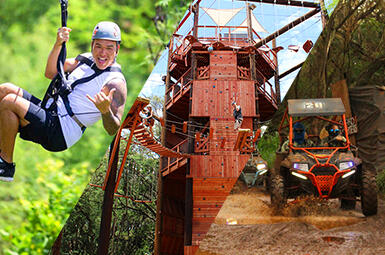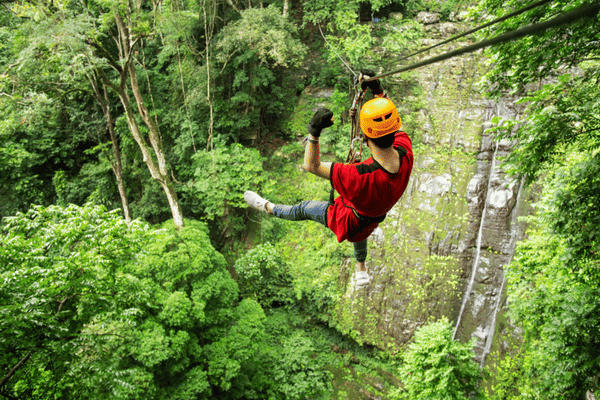
If the thought of stepping off a high platform makes your heart pound, you're not alone. Many people feel nervous about ziplining at first. Fear of heights ranks as the second most common fear among Americans. Our natural instincts kick in to keep us safe when we're peering down from platforms high above the ground.
Here's the good news: with the right prep and mindset, you can overcome that fear and have the time of your life on a zip line adventure. This guide will show you why ziplining might seem scary at first and why it's much safer than you think. You'll learn proven tips to help you conquer your fear of heights and fully enjoy the ride.
Is ziplining scary? Many first-timers freeze on the small platform, wondering, is ziplining scary while their feet dangling above ground. That zip line moment triggers fear of heights, but breathing helps.
Your brain signals real fear, but each zip line cable, harness, and all the safety gear meet strict rules, letting you breathe deep before cruising to the next platform.
Guides supervise zip line tour with thick gloves and safety rundown. Each zip line robust; you'll zip line, zip line to landing platform, zip line back smiling, zip line gracefully.
Real fear often flares when the unknown looms: Will the cable hold, how fast will the zip line move?
Our natural instincts shout danger near a platform edge; feeling scared before zip lining on a zip line simply means your body’s safety systems work.
The scariest part is standing still on the small platform; jump and zip lining turns fear into wind, speed, and soaring truly delight.
Many finish their first zip line tour laughing, amazed anticipation outweighed the experience, praising the professional equipment and supportive operators back home.
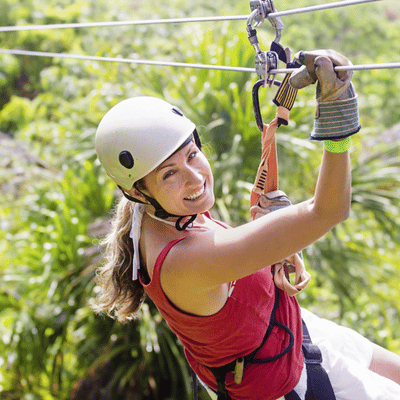
Despite the fear of heights, zip line adventures are among the safest ways to combine altitude and high speeds. When you ride a zip line, you are secured in a professional harness the entire time. This harness, along with zip line equipment like clips and pulleys, supports you fully. You are essentially sitting in a snug seat attached to the cable, so even if you jump or let go you would not hit the ground.
On a classic canopy tour in Costa Rica, one lady conquered her lifelong fear of heights by gliding across two lines strung through lush rainforest. In that famous Sky Trek park, also in Costa Rica, guides share practical zip lining tips before every run to reduce anxiety. Modern zip line systems rely on redundant braking mechanisms, making the ride both thrilling and safe.
Whether you choose a backyard zip line, a mountain course in Costa Rica, or a seaside run in yet another part of Costa Rica, the sensation is pure fun. Each zip line segment lets you soar freely while the equipment does the work. Overcoming a second bout of fear of heights, you may even jump enthusiastically off the platform, trusting the cable. Embrace the thrill, and remember that proper gear and experienced guides keep every zip line experience secure.
Modern zip line courses rely on cables, harnesses, pulleys, and anchors rated for several tons, far beyond any person’s weight. With built-in redundancy, the chance of a zipline cable breaking is about one in a billion.
Professional zip line equipment uses dual attachment points, clipping you in two places; if one failed, the backup holds. Zip line operators inspect lines and safety brakes, keeping every ride secure from platform to landing.
During a recent tour in Costa Rica, one visitor with a fear of heights discovered each zip line spans hundreds of feet yet feels stable at high speeds. The trip began with guides explaining how every zip line is overbuilt, and by the end of the trip the traveler said the system worked fine.
Whether you zip across rainforest canopies or desert cliffs, the sensation of speed on a zip line is exhilarating but controlled, and spring brakes ensure you never hit the landing. Seasoned tour leaders remind guests that trusting the zip line hardware and signals will keep the outing fine from start to finish. Months later the same adventurer planned another zip line adventure in the mountains.
Reputable zip line operators follow strict safety regulations and inspections. Many zipline parks have daily safety checks on all lines and gear, plus thorough weekly and monthly inspections. Professional inspectors evaluate the entire course annually to ensure everything meets industry standards.
In about half of U.S. states, commercial ziplines are overseen by state ride inspectors, similar to how they regulate roller coasters. Operators must comply with weight limits, equipment standards, and safety protocols set by authorities like the Association for Challenge Course Technology.
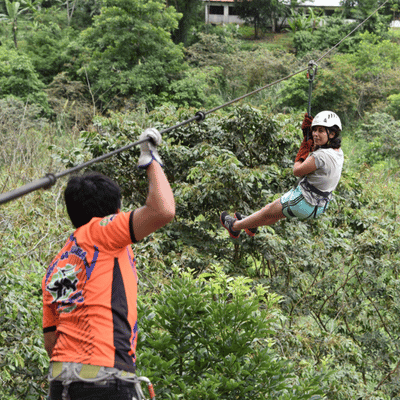
When you arrive for a zipline tour, you'll meet trained guides who handle all the clipping in, safety checks, and braking. These guides double-check your harness and helmet, connect you securely to the line (often with two attachment points for backup), and give thorough safety preparation before you start.
Most zipline incidents that do happen are often due to people not following instructions or using improper equipment, not failures of professional gear. Following the safety regulations and listening to your guides keeps you safe - that's totally within your control.
Different zipline courses use different braking systems to ensure safe landings:
Modern zip line equipment uses springs or magnets, slowing you gently before the next platform.
On some tours zip line officials catch your harness so you stop smoothly.
Older courses have riders press leather gloves on the cable, though most zip line tour operators prefer all the safety equipment.
Ziplining doesn't require extreme physical strength. As long as you can walk to the platforms and are within the weight limit (typically around 250 pounds), you can zipline. Most courses also have minimum weight requirements (around 50-70 pounds) to ensure riders don't get stuck mid-line.
Age is usually not a barrier - there are children as young as 5 zipping with guides, and even seniors in their 90s have enjoyed zip lining. The current world record for oldest zipliner is held by a 106-year-old gentleman who conquered a zipline in the UK!
You'll sign a waiver and get outfitted with all the safety equipment - a full-body harness, helmet, and sometimes gloves. The staff will adjust your harness to fit properly around your thighs, waist, and chest.
Wear comfortable clothing that allows movement and close toed shoes with good grip. Sneakers or hiking shoes are ideal. Avoid flip-flops or loose sandals - you don't want footwear flying off mid-zip!
Before any zip lining begins, you'll attend a safety briefing where guides explain how the course works, demonstrate proper body positioning, and go over ground safety rules. They'll show you how to sit back in the harness like you're in a chair, with your legs slightly raised in front of you.
Many courses start with easier, shorter lines and progress to longer, higher ones. This gradual progression helps build your confidence step by step. Some parks even have a practice zip close to the ground where you can get comfortable with the equipment.
You'll climb to the first launch platform where a guide clips your harness to the cable trolley. This is when you might feel peak nervousness. Remember: everything is secure, the guide is holding onto you, and nothing happens until you're ready.
If you find it scary, communicate with your guide. They can sometimes offer tandem rides or provide extra encouragement. Some guides will even help ease you off the platform so you don't have to make that scary first jump yourself.
Once you step off, most people find fear disappears almost immediately, replaced by pure excitement. Zip lining feels like gliding or flying. You won't feel the gut-dropping sensation of a roller coaster - instead, you're moving forward through the air on a slight downward slope.
During the ride, you'll hear the whirring of the pulley and feel the wind rushing past. Many people find themselves yelling in joy or surprise. The sensation is smooth and controlled, not jerky or chaotic like you might expect.
Most tours have several zip lines in succession, anywhere from 3 to 10 different lines. You might have short nature walks or suspension bridges between platforms. By the second or third line, most people's nerves have calmed significantly. You'll often be cheering on others in your group, creating a supportive atmosphere.
The final zip is often the longest or fastest as a grand finale. By then, you'll be ready for the ultimate thrill!
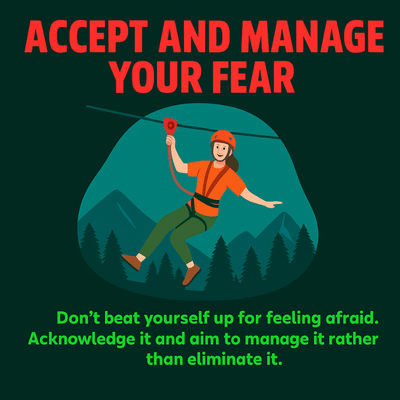
Don't beat yourself up for feeling afraid. Acknowledge it and aim to manage it rather than eliminate it. Even seasoned adventurers feel nerves - it's part of what makes the experience exciting. Tell yourself "I'm nervous and that's okay" rather than fighting the feeling.
Pick a beginner-friendly tour for your first time. Look for places known for supportive staff and courses that start with easier lines to build confidence gradually. Read reviews from other scared first-timers to find operators who excel at helping scared guests.
Some courses offer different difficulty levels or shorter "taster" experiences perfect for testing the waters. Don't feel pressured to tackle the most extreme course on your first try.
Ask guides about the gear and watch their meticulous safety checks. Knowing the cables can hold several tons of weight and seeing the backup systems will ease your mind. Understanding how the safety mechanisms work gives you confidence in the systems protecting you.
Pay full attention during safety briefings and follow all safety rules diligently. If panic creeps in on the platform, tell your guide - they've helped thousands of nervous first-timers and know exactly what to say and do.
Don't be embarrassed about being scared. Guides see it every day and are skilled at providing the right amount of encouragement and support each person needs.
Take slow, deep breaths and check your body for tension. Unclench your jaw, drop your shoulders, and relax your grip. You don't need a death grip on the harness - the equipment has you secure.
Try smiling, even if it feels forced at first. The physical act of smiling can actually trick your brain into feeling more positive and relaxed.
Instead of focusing on how high you are, look out at the horizon or beautiful scenery around you. Many zipline courses are set in areas of natural beauty like rainforests, canyons, or mountains. Let the stunning views distract you from the height.
When you're zipping, look forward to where you're going or around at the landscape - anywhere except directly below your feet.
When it's go-time, act decisively. The longer you stall, the more fearful thoughts your mind will generate. Count "1, 2, 3, go!" and step off without hesitation. The anticipation is almost always worse than the actual experience.
If possible, bring a friend or family member. Having someone you trust cheering you on makes a huge difference. Some courses even have dual lines so you can zip side by side with a partner.
Even if you go solo, you'll likely find support from other participants and the guides. Large groups often develop a camaraderie as everyone faces their fears together.
Shift your thinking from dread to excitement. Instead of "I'm so scared," try "How amazing will I feel when I've done this!" Picture yourself at the end of the course, feeling proud and accomplished.
Remember why you decided to try ziplining in the first place. Whether it's to conquer a fear, share an adventure with family, or tick something off your bucket list, hold onto that motivation.
Ziplining adventures can be found worldwide, each offering unique landscapes and thrills. Costa Rica's Arenal area offers incredible canopy tours through lush rainforests, where you can spot wildlife while soaring through the treetops. The country is considered the birthplace of modern ziplining tourism.
North Wales features some of the world's fastest zip lines, with riders reaching speeds of 100 mph over mile-long lines. These extreme courses offer breathtaking views of mountains and valleys.
Whether you're planning a trip during Holy Week, spring break, or any vacation, these destinations combine stunning natural beauty with expertly designed courses. Many locations offer different difficulty levels, from family-friendly canopy tours to extreme adventure experiences.
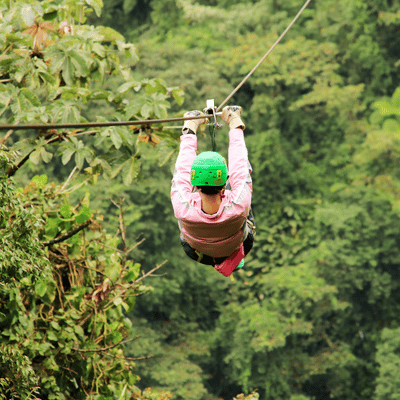
Ziplining might seem scary when you're standing on that first platform, but it's a well-engineered thrill that's generally totally safe and incredibly fun. With professional safety equipment, thorough training, and supportive guides, you're in excellent hands from start to finish.
The fear you feel is real, but it doesn't have to hold you back. By confronting it, you could experience one of the most exciting adventures of your life. Picture yourself flying through treetops, conquering your fear of heights, and reaching the other side with a huge grin.
Remember, courage isn't the absence of fear - it's feeling afraid and taking the adventure anyway. The confidence you gain from ziplining can open doors to other thrilling activities and show you that you're capable of more than you thought.
Whether you're a parent coaxed into it by excited kids, a traveler checking off a bucket-list item, or a thrill-seeker looking for your next rush, ziplining offers a unique blend of adrenaline and confidence-building. It's a chance to defy gravity safely and create unforgettable memories.
Most people discover that their worst fears about ziplining never materialize. Instead, they find themselves laughing, screaming with joy, and immediately planning their next zip line adventure. You might start with butterflies, but you'll likely end up saying "Fear? What fear? Let's go again!"
The hardest part truly is that first step off the platform. Everything else is pure excitement, natural beauty, and the incredible feeling of flying through the air. Don't let fear rob you of this amazing experience.
Book your zipline adventure today and discover why millions of people choose to embrace the thrill. Your future self will thank you for taking that leap of faith.
